On May 28, 2022 Grace Ellen Miller, a local gardening expert who also works at the Portland Nursery in Tacoma, made a presentation to the DCG gardeners on techniques for growing tomatoes in the Pacific Northwest.
Here are the notes and handouts from the presentation. We hope you find this information useful in your gardening efforts.
Happy gardening!!!
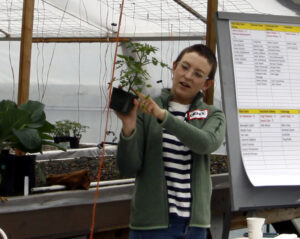
FAST FACTS
DuPont, WA:
- USDA Growing Zone 8b
- Avg. Last Frost May 1-10
- Avg. First Frost October 21-31
- Avg. frost-free growing season is 173 days
Tomato growing habits:
- Indeterminate: will grow continually until first frost. Sets fruit continuously through the season as the plant grows.
- Determinate: grows to a finite size, sets flowers and fruits all at once, then stops producing. Sometimes called “bush” or “patio” type.
- Semi-determinate: grows continuously through the season but overall, more compact plant, produces fewer side shoots (suckers) and therefore less fruit than indeterminate plants.
PLANTING TOMATOES
When planting tomatoes in the garden from starts, plant them deeply, removing the bottom leaves (so that 4-6 leaves remain – about 6 inches of height – at the top of the plant) and planting deep enough to cover the stem up to the remaining leaves. This will encourage roots to grow along the buried portion of the stem, lending stability to the plant and keeping it warm in the early part of the season.
Select starts that have sturdy stiff stems, not plants that appear leggy or floppy. If you are unsure of your starts have been properly hardened off, keep them outdoors in a shaded part of your garden for a few days before planting to ensure that they do not get sunburned.
Transplant tomatoes when overnight temperatures are consistently over 40F or be prepared to cover them to keep them warm.
Water in start deeply at transplanting time but beware of over-watering and rotting your plants in the early part of the season.
Consider adding a small amount of crushed eggshell or oyster shell to prevent blossom end rot (Calcium deficiency) to the planting hole. If adding a granular fertilizer, use something very mild, like a 3-3-3 mix, to avoid burning your plants. Using a worm tea or liquid fertilizer is generally gentler on plants and less likely to burn them. I generally wait to fertilize until I see blossoms forming – there is such a thing as too much of a good thing with fertilizer.
COMMON TOMATO PROBLEMS
Late Frost
- If your tomatoes suffer damage from a late frost, don’t despair! There is a very good chance they will recover. However, mitigating the risks of a late frost will ensure your harvest is not delayed!
- Check your forecast and ensure overnight temperatures are consistently over 40F before planting tomato starts outdoors. This is typically around Mother’s Day.
- Cover recently transplanted tomatoes overnight – I use an overturned 1 gallon black pot (saved from other purchased plants) or a gallon milk jug with the bottom cut off
- Clone your plants! Cut off side-shoots (suckers) when 3-5 inches long and place in water in a sunny windowsill. In about a week the side-shoots will have roots 2-3 inches long and you can pot-up in soil. This is best done with indeterminate tomatoes.
- Caused by a lack of calcium. Remedy by applying a tomato fertilizer that contains calcium, or by adding calcium to the soil in the form of pulverized eggshell or oyster shell.
- Both early and late blight arise from humidity and soil contamination of the plant foliage. Avoid blight by maximizing airflow in and around the plant. Avoid overhead watering and keep foliage dry by using a drip system or watering as close to the base of the plant as possible.
Cracking fruit
- Caused by sudden over watering of the plant, usually resulting from late summer rain or excessive watering by the gardener. As fruits approach ripening, taper off watering to 1-2 times per week, watering deeply but infrequently. Check the forecast for rain and if heavy rain is expected, cover or relocate plants so that they will not become waterlogged.
Bland fruit
- Also caused by over watering. As fruits are ripening, avoid watering for a few days before harvesting to concentrate the flavors. Again, deeper but less frequent watering is ideal for a flavorful tomato. A little bit of wilting in the plant during the hottest part of the day is normal and acceptable as long as you see plants recovering as evening temps cool off.
Insect damage
- To combat aphids, plant “bait” plants like nasturtiums and use ladybug lures. Provide ample habitat for predators like ladybugs, ants, and parasitic wasps.
- For caterpillar damage, use an organic solution like Bt (Bacillus Thuringiensis) sprayed in the evening (caterpillars are active at night and Bt will break down in sunlight).
- For beetle or other insect damage, use diatomaceous earth sprinkled lightly on the foliage and around the base of the plant. As insects walk across the DE it scores their exoskeleton and causes them to desiccate. Note that this is non-toxic but also an indiscriminate solution and can also harm beneficial insects.
- Plant Marigolds – I have found that marigolds tend to repel a large number of pests in the garden, including the stray cats who like to use my raised beds as a litter box.
TO PRUNE, OR NOT TO PRUNE?
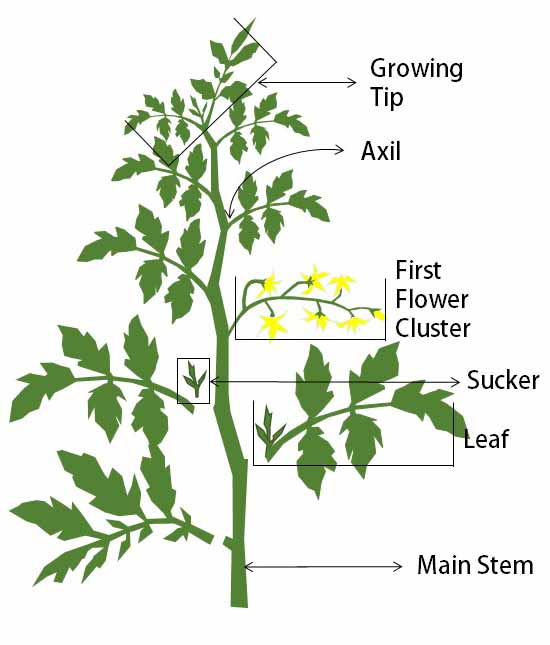
| PROS |
CONS |
| Helps increase airflow and prevent blight | Requires extra labor, especially during peak season |
| Makes fruit easier to access at harvest | May reduce your overall harvest |
| Contains the overall size of the plant | If done improperly may stunt your plants |
| Topping encourages ripening at the end of the season | Should not be done on determinate plants |
There are many opinions on whether tomatoes should be pruned or not. I adopt an as-needed approach. I prune some leaves and suckers for the purpose of increasing airflow where I think the pants need it early in the season, and as fruit ripens, I prune my plants to make harvesting easier. I also cut off any leaves that appear diseased to contain blight. Some trellising methods, like lower-and-lean, require pruning plants to a single main stem. In general, pruning tomatoes is not necessary for healthy plants and should never be done on determinate plants. As you develop the growing method that works best for you, pruning will become an intuitive choice.
GENERAL TIPS FOR SUCCESS
Use locally-grown regionally-adapted seed (see list of recommended growers).
Choose varieties adapted to cooler/shorter growing seasons; particularly Russian, Eastern European, and Japanese heirlooms. Some of my favorites are:
- Cosmonaut Volkov
- Black Prince
- Sasha’s Altai
Start seeds indoors 8 weeks before last frost using a heat mat for germination.
Grow tomatoes in full sun. Against a South-facing exterior wall or fence is ideal as it will trap and reflect heat.
GROWING & TRELLISING METHODS
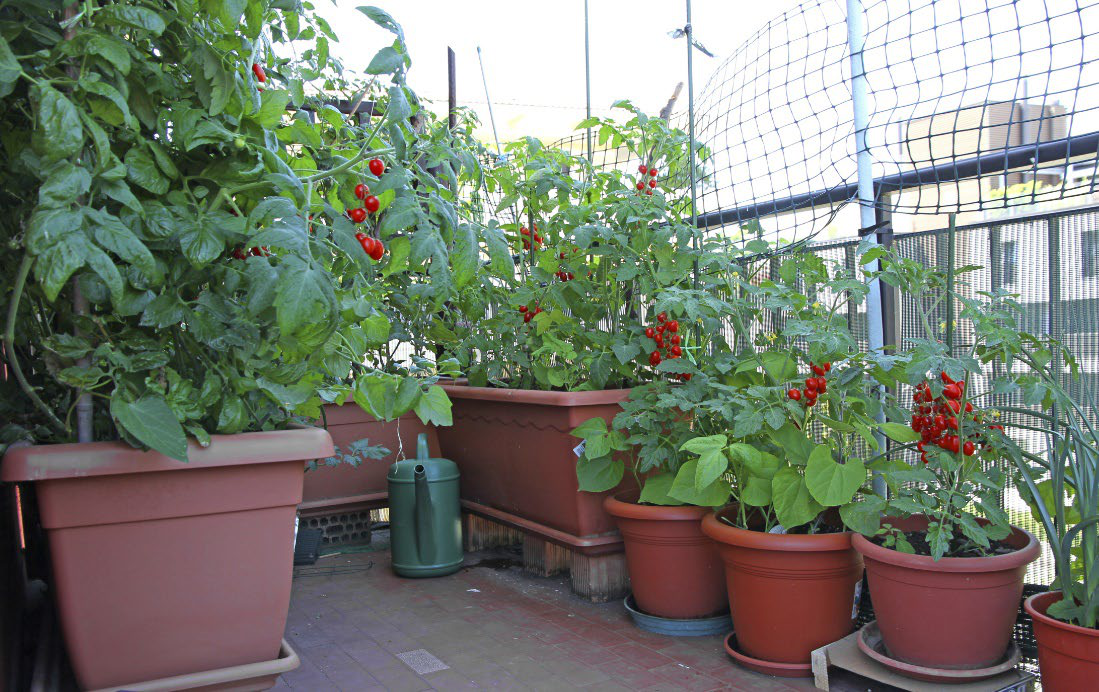
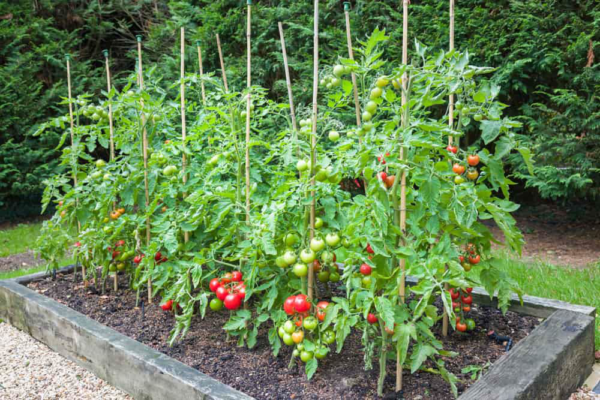
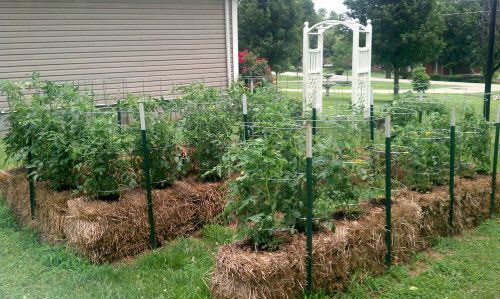
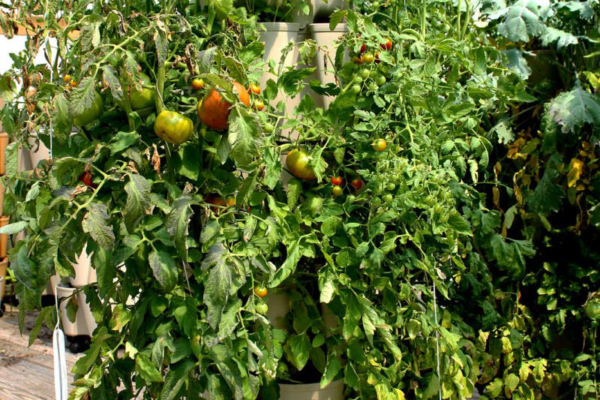
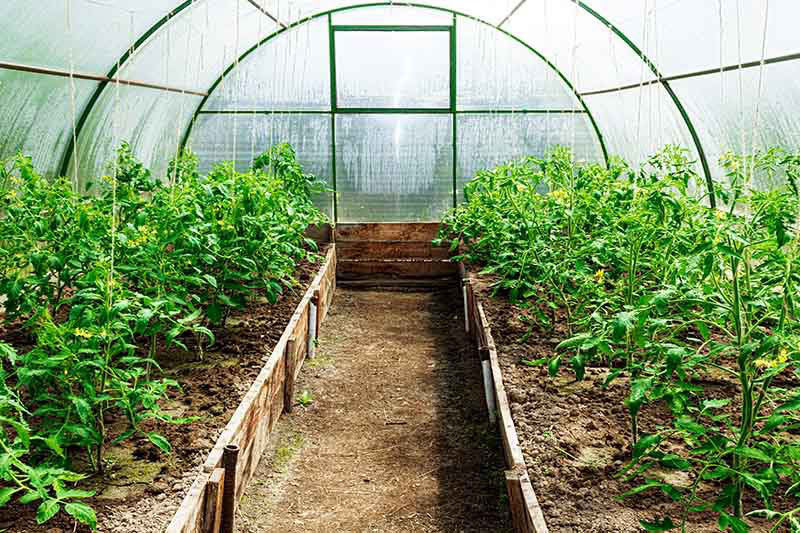
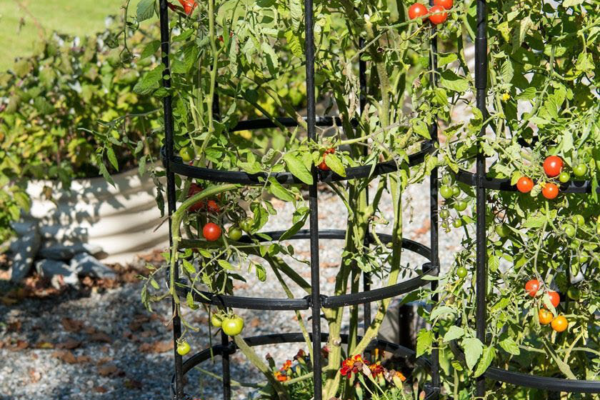
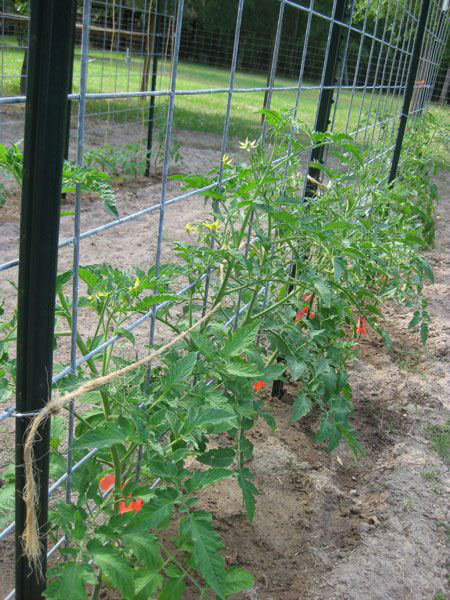
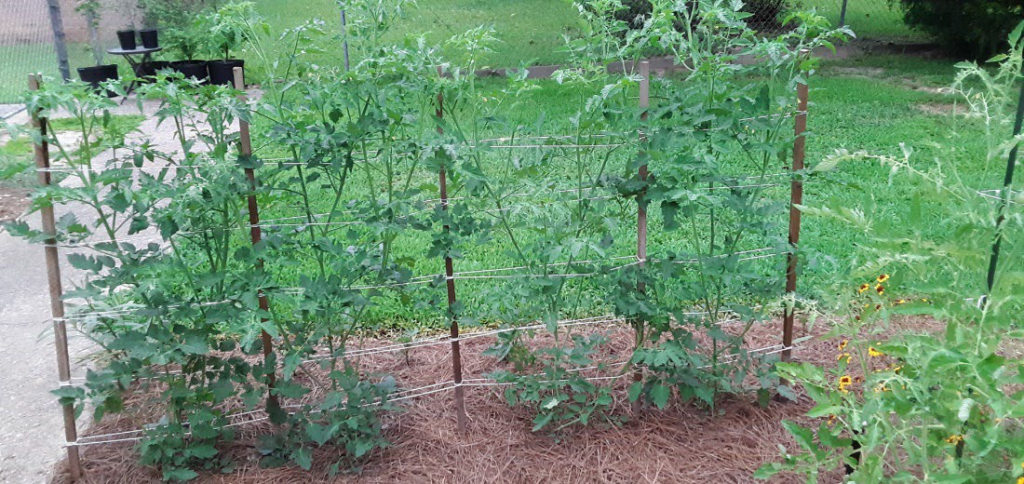
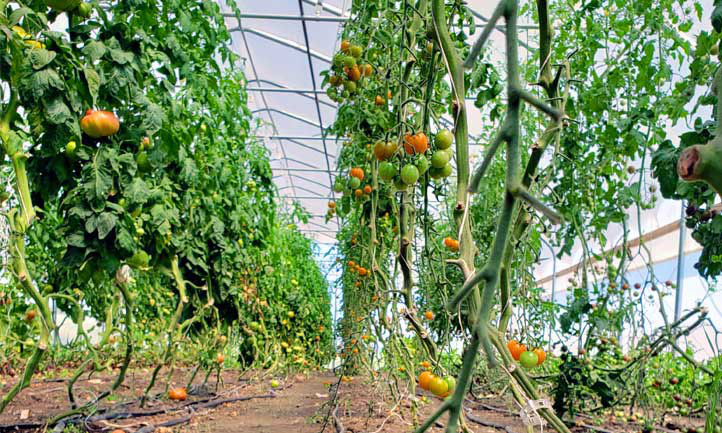
Whatever method you choose will depend on several factors:
- Time/effort required
- Space
- Availability of materials
- Costs
- Existing growing conditions
You may choose to rely on ready-made materials such as raised bed kits, cattle panels, or tomato cages due to limitations on your time or physical ability; however, these things can be more expensive. Choosing a more labor-intensive trellising method like the Florida Weave can save you money by utilizing more affordable materials. Similarly, not everyone has access to a greenhouse due to financial or space limitations but using the hay bale method of growing (which involves growing tomatoes in actively composting hay bales) can extend your growing season somewhat by warming young tomato plants for earlier transplanting. Using the hay bale method does require careful attention to watering and the addition fertilizer, and can therefore require more time, effort, and money.
RESOURCES
Epic Tomatoes, Craig LeHoullier

YouTube
- Jess Sowards, Roots and Refuge Farm
- Gary Pilarchik, The Rusted Garden
- Huw Richards
- Epic Gardening (Fluent Garden)
- Chris Chung, @fluent.garden
Sources for Tomato Seeds
- Tomatofest
- Wild Boar Farms
- Seed Savers Exchange
- Ed Hume*
- Uprising Seeds*
- Adaptive Seeds*
- Irish Eyes Seeds*
- West Coast Seeds*
*local seed source
-- Grace Ellen Miller
